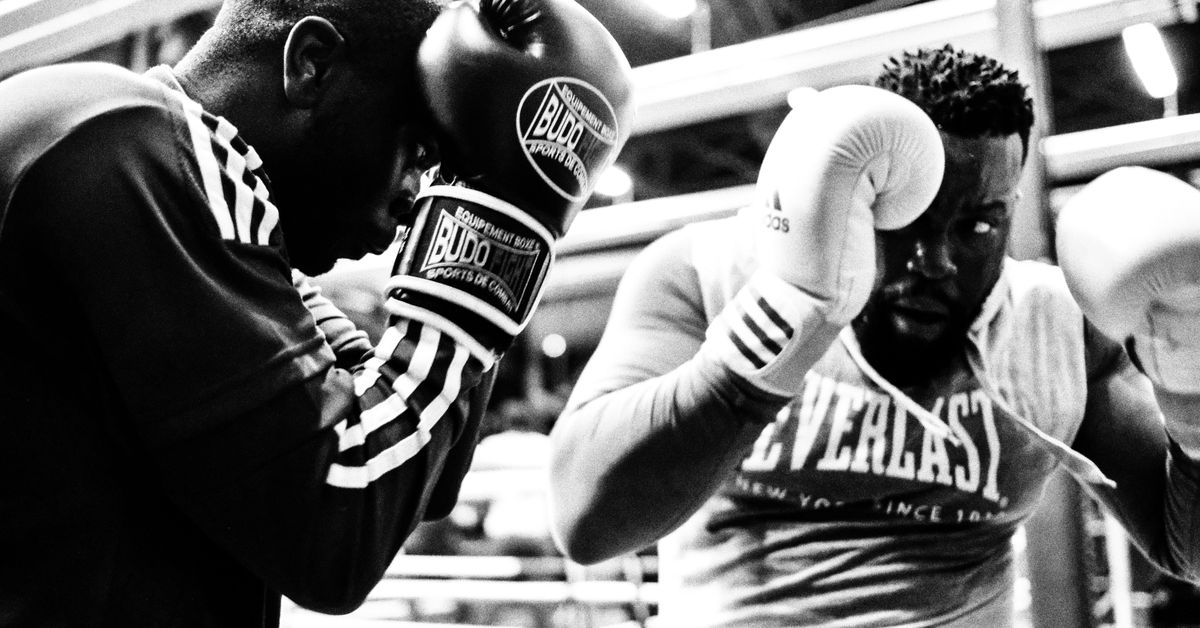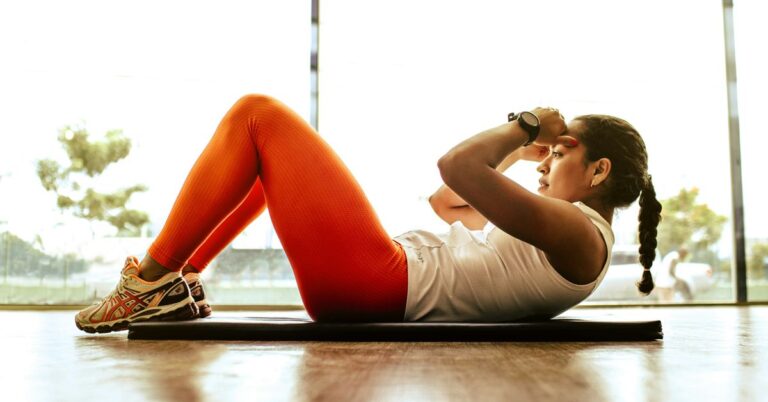Are You Training Wrong? Discover the Missing Link in Sports-Specific Conditioning
We’ve all been there—struggling through a workout, drenched in sweat, and wondering if it’s all for naught. You hit the gym religiously, follow all the fitness trends, and yet somehow, your performance just doesn’t improve. If you find yourself nodding along, it might be time to ask: are you training wrong? What if the missing piece to your athletic puzzle lies in something you’ve never considered? Let’s dive deep into the world of sports-specific conditioning and uncover what you might be overlooking.
The Basics: What Is Sports-Specific Conditioning?
Before we delve into the nuances, let’s clarify what sports-specific conditioning really means. Essentially, it refers to training that is tailored to the specific demands of a sport. Think of it like this: a marathon runner and a sprinter have vastly different needs. While both are athletes, their training regimens are as different as chalk and cheese. Understanding these differences is crucial if you want to optimize your performance.
Some might think that just running more miles will make them faster. Others may believe that lifting heavier weights will automatically translate to better performance on the field. But this is where many athletes stumble. True sports-specific conditioning goes beyond standard fitness routines; it requires a deep understanding of the skills, movements, and energy systems unique to your sport. So, if you’re still doing the same old workouts you did in high school, it might be time for a reality check.
The Missing Link: Movement Patterns
One of the most significant aspects often overlooked in training is the importance of movement patterns. You see, every sport has its unique set of movement patterns that athletes must master. For instance, a soccer player needs agility, quick changes of direction, and proper kicking mechanics, while a basketball player requires explosive jumps and lateral movements. If your training does not mimic these specific patterns, you could be wasting precious time.
Consider this: a study conducted by the National Strength and Conditioning Association found that athletes who incorporated sport-specific movement patterns into their training improved performance metrics significantly more than those who did not. (I remember chatting with a coach who swore by plyometric drills for his basketball team, and it struck me how crucial those explosive movements were for their success.)
Integrating Functional Strength
Now, let’s talk about functional strength. This concept has gained traction in recent years, and for good reason. Functional strength training focuses on building strength that is directly applicable to the movements you perform in your sport. Instead of just cranking out reps on a bench press, think about exercises that replicate the actions you take in your game.
For example, a tennis player might benefit from medicine ball slams to mimic the explosive upper body movements used during serves and volleys. Meanwhile, a swimmer could focus on resistance band exercises that enhance their stroke mechanics. In essence, you’re not just lifting weights; you’re training your body to perform better in your specific context. This is where the true magic happens.
Energy Systems: Understanding Your Sport
Did you know that different sports rely on different energy systems? Yes, it’s true! The human body has three primary energy systems: the ATP-PC system, the glycolytic system, and the oxidative system. Each of these systems fuels different types of activity and has its own unique demands.
For instance, if you’re a sprinter, your training should primarily focus on the ATP-PC system, which provides quick bursts of energy for short durations. On the other hand, if you’re a long-distance runner, you’ll be drawing on your oxidative system, which fuels activities that last much longer. It’s a bit like knowing when to switch gears in a car; if you’re in the wrong gear, you simply won’t perform efficiently.
I once had a long chat with a triathlete who explained how he structures his training around these energy systems. It was enlightening to hear how he built specific workouts to enhance his performance across swimming, biking, and running. If you’re not training your energy systems according to your sport, you might as well be trying to drive a race car on a dirt road.
The Role of Recovery and Adaptation
Let’s take a step back and talk about recovery. It’s the unsung hero of sports-specific training. All the strength and conditioning in the world won’t help if you’re not allowing your body the time it needs to recover. Many athletes overlook this crucial component, often thinking that more is better. But sometimes, less really is more.
During recovery, your body is busy repairing muscles, replenishing energy stores, and adapting to the stresses you’ve placed upon it. If you’re constantly pushing yourself without adequate recovery, you might be sabotaging your training efforts. It’s like trying to build a house without letting the cement set – it’s just not going to work!
Make sure to incorporate rest days, active recovery sessions, and perhaps even deload weeks into your training routine. You’ll be amazed at how much better you feel and perform when you give your body the time it needs to bounce back.
Common Pitfalls: Are You Making These Mistakes?
As an athlete, it’s easy to fall into training traps that can hinder your progress. Here are a few common pitfalls to watch out for:
- Neglecting Flexibility and Mobility: Just because you’re not a gymnast doesn’t mean you can skip stretching. Flexibility and mobility are crucial for injury prevention and overall performance.
- Overtraining: It’s a fine line between training hard and overdoing it. Listen to your body, and don’t forget to rest.
- Ignoring Nutrition: You can’t out-train a bad diet. Fuel your body with the right nutrients to support your training.
- Sticking to a Fixed Routine: If you’re doing the same workout week in and week out, your body will adapt, and progress will stall. Embrace variety!
Reflecting on my own journey, I remember a time when I was convinced that more was always better. I was lifting heavy weights without paying attention to flexibility, and let me tell you, my body paid the price. Learning to integrate flexibility and recovery into my training was a game changer.
Seeking Professional Guidance
While self-education is essential, sometimes it’s beneficial to seek professional guidance. Coaches, trainers, and sports specialists can provide invaluable insights into your training regimen. They can help identify gaps in your conditioning and offer tailored solutions to enhance your performance.
I can’t stress this enough: having a knowledgeable coach can elevate your training to levels you never thought possible. I recall a time when I enlisted the help of a local strength coach; the personalized workouts and feedback changed my approach entirely. It’s like having a map when navigating a new city—suddenly, the routes become clearer.
Embracing Technology in Training
In today’s digital age, technology plays a significant role in sports conditioning. From wearable fitness trackers to performance analysis software, athletes have access to an array of tools that can help optimize their training. These technologies can provide actionable insights into heart rate, recovery status, and even biomechanics.
For instance, using a heart rate monitor during workouts can help ensure you’re training in the right zones specific to your sport’s demands. I remember watching a documentary about an elite cycling team that utilized data analytics to fine-tune their training regimens. The level of detail they captured was astounding, and it underscored how technology can reveal what we might miss with the naked eye.
The Power of Mental Conditioning
Let’s not forget about the mind, which is just as crucial as the body in sports performance. Mental conditioning can often be the missing link in achieving peak performance. Visualization techniques, mindfulness, and focus training can all contribute to an athlete’s success.
Consider this: an athlete who has trained their mind to visualize success, manage stress, and maintain focus during competition is likely to perform better than one who hasn’t developed these skills. I recall an interview with a sports psychologist who emphasized the importance of mental rehearsal. It’s a fascinating concept that many athletes overlook, but the benefits can be significant.
Putting It All Together: A Holistic Approach
Ultimately, the key to effective sports-specific conditioning is a holistic approach that encompasses all these elements—movement patterns, functional strength, energy systems, recovery, nutrition, and mental conditioning. It’s not enough to focus on just one aspect; you must integrate them all to create a comprehensive training program tailored to your unique needs.
So, what does this look like in practice? Let’s say you’re a soccer player. Your training might include:
- Drills that focus on agility and quick direction changes
- Strength training that mimics kicking and sprinting movements
- Interval training to develop your aerobic and anaerobic capacities
- Regular flexibility sessions to maintain mobility
- Mindfulness practices to enhance focus during games
When I reflect on my own training, I realize that incorporating these diverse elements has transformed my performance. It’s about creating a synergy that allows you to excel in your sport.
Final Thoughts: Are You Ready to Rethink Your Training?
As we wrap up this exploration of sports-specific conditioning, I encourage you to take a good, hard look at your training regimen. Are you truly addressing the unique needs of your sport? Or are you stuck in a rut, doing the same old workouts without seeing results?
Remember, it’s never too late to make changes. Whether it’s seeking the guidance of a coach, embracing technology, or simply shifting your mindset, there are always opportunities for growth. So, don’t be afraid to step outside your comfort zone and experiment with new approaches. After all, the missing link in your training could be just around the corner.
At the end of the day, sports-specific conditioning is about more than just improving performance; it’s about enhancing your overall athletic experience. So, get out there, train smart, and enjoy the journey. And who knows? You might just discover a new level of performance you never thought possible.









